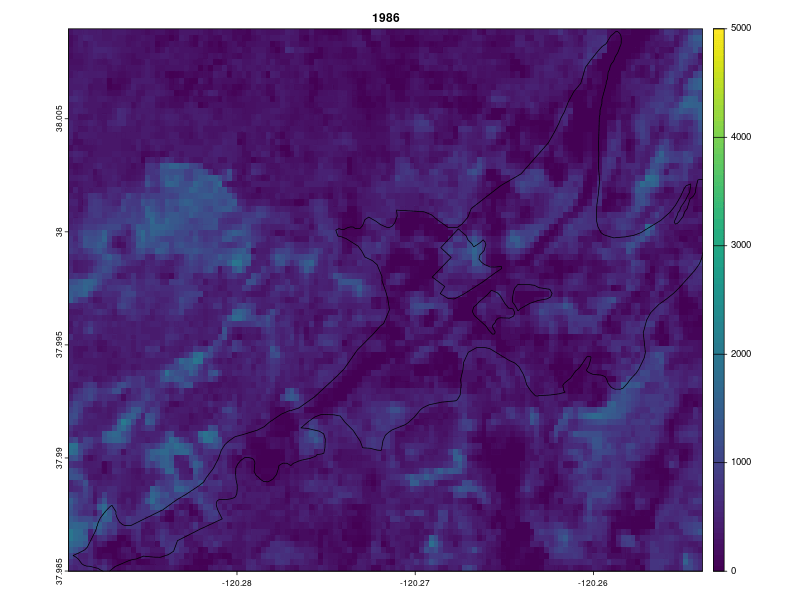## terra 1.8.80First, we buffer 1000 meters around a longitude/latitude coordinate (WGS84 decimal degrees) using the {terra} package.
Change the buffering distance to include different extents around a point.
p <- buffer(terra::vect(
data.frame(x = -105.97133, y = 32.73437),
geom = c("x", "y"),
crs = "OGC:CRS84"
), width = 1000)You can change the coordinates your favorite range spot!
We can interactively inspect the area of interest, for example using
terra::plet() {leaflet} map:
Then we use {rapr} to download the ‘Rangeland Analysis Platform’
“vegetation-biomass” product for 1986 to 2024 using the polygon
p to define the area of interest.
rap <- get_rap(
p,
product = "vegetation-biomass",
years = 1986:2024,
verbose = FALSE
)Once that’s done, let’s look at the first layer:

Animated Plots
Now we will select just the
"annual forb and grass biomass" layers, iterate over them,
and plot. We are symbolizing with a common range of [0,500]
pounds per acre so the color scheme is consistent from year to year. We
write this iteration into a function called makeplot() and
use {gifski} to render an animated GIF file from the R plot graphics
output in each year for a total of 39 layers.
makeplot <- function() {
lapply(grep("annual_forb_and_grass", names(rap)), function(i) {
terra::plot(
rap[[i]],
main = names(rap)[i],
type = "continuous",
range = c(0, 500),
cex.main = TRUE
)
terra::plot(
terra::as.lines(p),
col = "white",
add = TRUE
)
})
}Using the {gifski} package save_gif() function we can
easily create an animated graphic of the RAP predictions:
try({
library(gifski)
gifski::save_gif(makeplot(),
gif_file = "annual_forb_and_grass_biomass.gif",
delay = 0.5)
})## [1] "annual_forb_and_grass_biomass.gif"